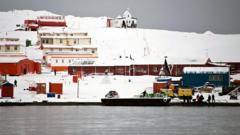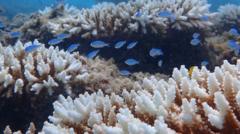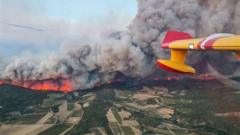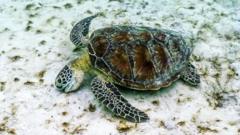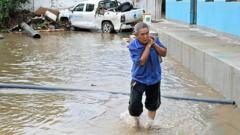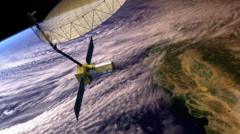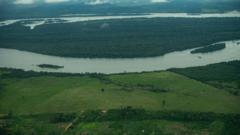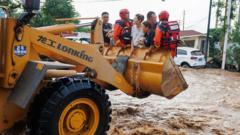As the colossal iceberg A23a approaches South Georgia, scientists and wildlife experts are concerned about the dangers it presents to local wildlife, particularly penguins and seals. This iceberg, which broke free from Antarctica's Filchner Ice Shelf back in 1986, is now on a perilous path toward the British territory famous for its rich marine life.
Largest Iceberg Threatens South Georgia's Wildlife
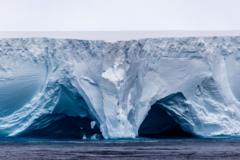
Largest Iceberg Threatens South Georgia's Wildlife
The giant iceberg A23a is on a collision course with South Georgia, posing risks to its fragile ecosystem of penguins and seals.
The world's largest iceberg, named A23a, is navigating away from Antarctica toward the fragile ecosystems of South Georgia, imperiling its indigenous wildlife. Currently located 173 miles (280 km) from the island, the iceberg is expected to collide with the territory that is home to vital colonies of King and Emperor penguins, as well as millions of elephant and fur seals.
In the past, encounters with large icebergs have led to devastating impacts on local wildlife. Sea captain Simon Wallace from the South Georgia government vessel Pharos lamented the dangers posed by such ice masses, especially when they hinder the feeding abilities of the island's animals. “I would be extraordinarily happy if it just completely missed us,” he stated.
Scientists and fishermen are closely monitoring the iceberg's path through satellite imagery, as A23a, one of the world's oldest icebergs, continues on its destructive trajectory. It calved from the Filchner Ice Shelf in Antarctica in 1986 and was initially trapped before breaking free in December. With its towering verticals measuring up to 1,312ft (400 m), the iceberg is predicted to decay rapidly in the warmer waters, shrinking from its original size of approximately 3,900 square kilometers to around 3,500 square kilometers—about the size of Cornwall.
The risks associated with the iceberg are not new. In 2004, another iceberg, A38, grounded near South Georgia, leading to the death of numerous chicks as its massive fragments obstructed access to feeding grounds. Mark Belchier, a marine ecologist advising the South Georgia government, emphasized that iceberg impacts on fisheries and wildlife are expected as their environment changes.
Concerns heightened in 2023 when another iceberg, A76, came perilously close to grounding near the islands. Andrew Newman from the fishing company Argos Froyanes described how they now navigate through lingering fragments, which have complicated their operations. This rising threat due to climate change has become part of daily life for local mariners, who remain vigilant against unexpectedly looming icebergs.
Although A23a's separation from Antarctica predates significant climate change impacts, it serves as a harbinger of more frequent iceberg occurrences as global temperatures rise. However, in a remarkable twist, A23a has provided scientists a unique opportunity: researchers aboard the British Antarctic Survey’s Sir David Attenborough collected vital water samples near the iceberg to study its effects on the southern ocean’s carbon cycle. Laura Taylor, a PhD researcher, detailed the iceberg's meltwater, rich in nutrients and microscopic life, offering insights into its environmental implications.
As A23a approaches South Georgia, its unpredictable nature remains a critical concern, and it is anticipated to soon dominate the island's horizons, presenting both a challenge and opportunity for the region’s ecological dynamics.


